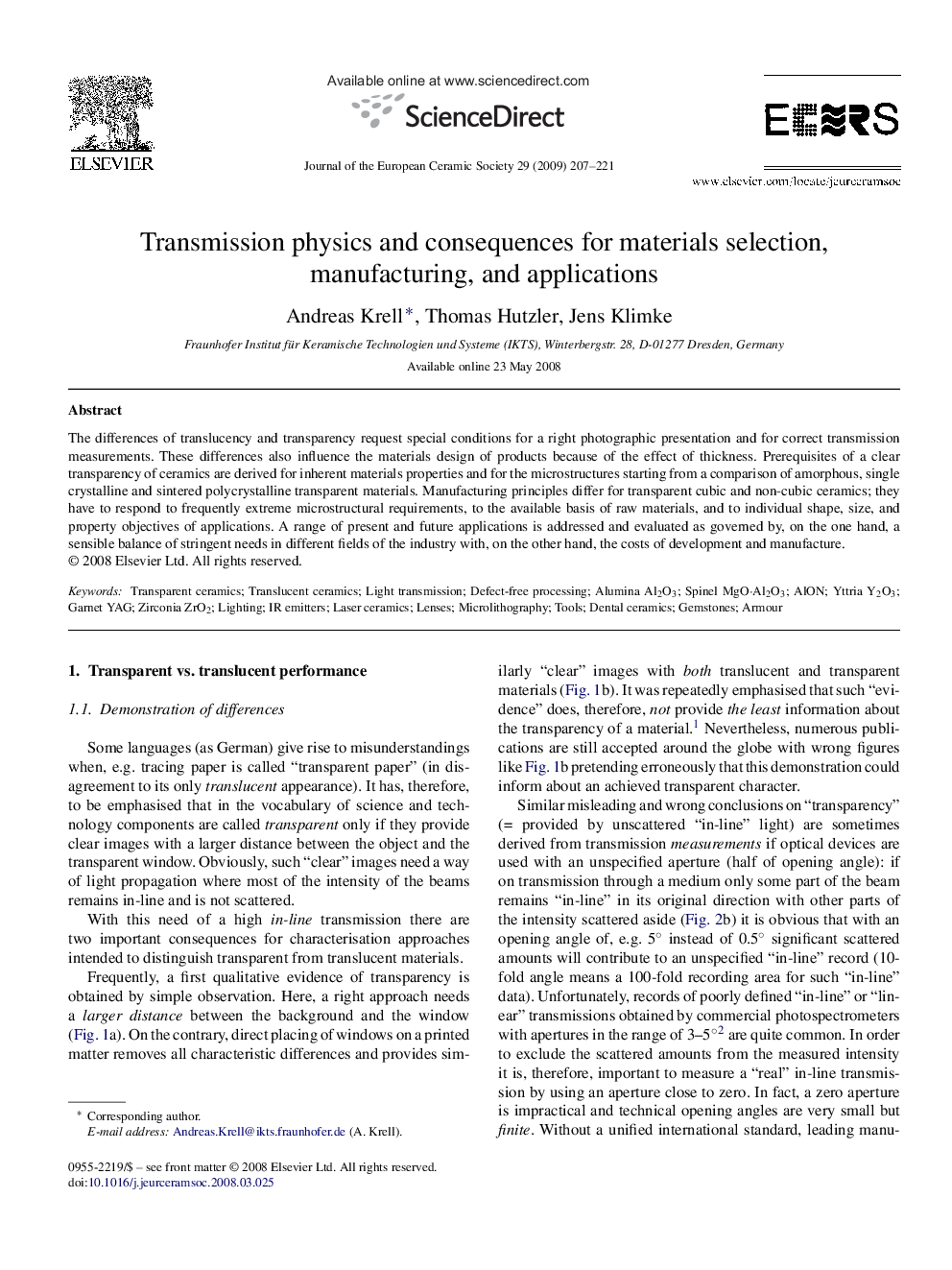| Article ID | Journal | Published Year | Pages | File Type |
|---|---|---|---|---|
| 1477083 | Journal of the European Ceramic Society | 2009 | 15 Pages |
The differences of translucency and transparency request special conditions for a right photographic presentation and for correct transmission measurements. These differences also influence the materials design of products because of the effect of thickness. Prerequisites of a clear transparency of ceramics are derived for inherent materials properties and for the microstructures starting from a comparison of amorphous, single crystalline and sintered polycrystalline transparent materials. Manufacturing principles differ for transparent cubic and non-cubic ceramics; they have to respond to frequently extreme microstructural requirements, to the available basis of raw materials, and to individual shape, size, and property objectives of applications. A range of present and future applications is addressed and evaluated as governed by, on the one hand, a sensible balance of stringent needs in different fields of the industry with, on the other hand, the costs of development and manufacture.
